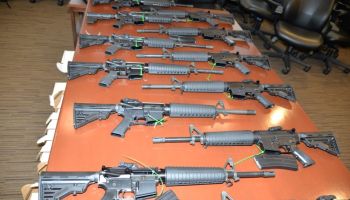Indianapolis Public Schools has removed 22 of its weakest teachers from their classrooms, the beginning of an effort to shore up teaching in the state’s largest district.
That group includes teachers who failed to control the students in their classrooms and others who had not mastered the material they were teaching, the district said.
Leaving them in classrooms would put children at risk of academic failure and physical harm from unruly students, Superintendent Eugene White said.
White’s emphasis on teacher accountability represents a break from the struggling district’s past, when administrators sometimes failed to take action against bad teachers for years, and district policies encouraged principals to ignore poor performers or pass them on to other schools. Educators nationwide are taking similar steps, bolstered by research that shows that even one bad teacher can jeopardize a student’s academic career.
“A poor teacher compromises the future and the education of a child,” White said. “Two bad teachers can do substantial damage to a student. . . . The students pay a price for that.”
More than 20 IPS principals took White up on his request to submit the names of teachers who should be removed. IPS has not publicly identified the 22 teachers. They will be given additional training this semester and then given a final chance next year to have a classroom while on probation.
Those who don’t perform will be dismissed, White said.
White and the teachers union said they agree a small portion of the district’s 2,500-member teaching corps struggles. The union, however, said the best response is to provide training rather than trying to fire them.
“They should be doing professional development first,” said Indianapolis Education Association President Ann Wilkins. “If they think there’s a deficiency, they should come up with a remedy.”
Wilkins said she supports the effort to get help for teachers in the worst situations but said a few teachers have been unfairly targeted.
Other big-city school districts have long been frustrated by their inability to weed out the worst teachers because of state laws and union rules.
New York City has become infamous for its “rubber rooms” where hundreds of incompetent or abusive teachers spend their days reading magazines and chatting — sometimes for years — while awaiting disciplinary proceedings and continuing to collect paychecks.
IPS also must follow state law and its union contract in dismissing teachers, but it expects that it will be able to go after teachers whose deficiencies are well-documented.Kate Walsh, president of the National Council on Teacher Quality, said she applauds IPS’ effort to identify its weakest teachers.
“The impact of this on kids is devastating,” she said. “You’re seeing districts all over the country right now with a fury trying to figure out how to do this.”
In the past, IPS has rarely tried to dismiss teachers who can’t teach. White said that must change.
The 22 teachers on probation this year are significantly more than the three or four that are typical in other years, said Jane Ajabu, the district’s personnel chief. Two are so bad that the district will move to terminate them this school year regardless of any improvement, she said.
The others will receive training this year while serving as “teachers on special assignment” in support staff roles at other schools, then will return to classrooms next year. Those who fail to improve will be fired, Ajabu said.
Many students in IPS tell of classes with teachers who don’t care or don’t bother to teach much.
Ashley Brown, a senior at Arlington High School, said most of her teachers have been good but said her school has a few teachers who have no business being in front of teenagers.
“There are some teachers who don’t know how to control the children, like if they’re disruptive,” she said. “It makes it harder to learn because you have distractions.”
Removing teachers like that, Brown said, would help students prepare for college and better prepare them for state standardized tests.
In most such cases, Ajabu said, blame lies with administrators rather than the teachers. All the teachers pulled from the classroom this semester could have done an acceptable job, she said, if they had been properly monitored and trained.
“There have been administrators who have not effectively provided leadership and instructional evaluation over the years,” Ajabu said.
Some principals didn’t do their jobs, she said, but other times they got caught up in a system that sometimes encouraged them to shuffle weak teachers on.
District rules, for instance, require that a principal who puts a problem teacher on a performance improvement plan must then keep that teacher the next school year. Some principals, Ajabu said, would quietly let teachers transfer and let some other principal deal with the problem.
The 22 teachers pulled from their classrooms this semester are not the only teachers who aren’t performing at the appropriate level, Ajabu said. Some principals chose not to identify poor performers, and others did not have enough documentation to move against teachers.
IPS had to start taking action, Ajabu said, for the safety of the children and to ensure that students were getting the knowledge they need














